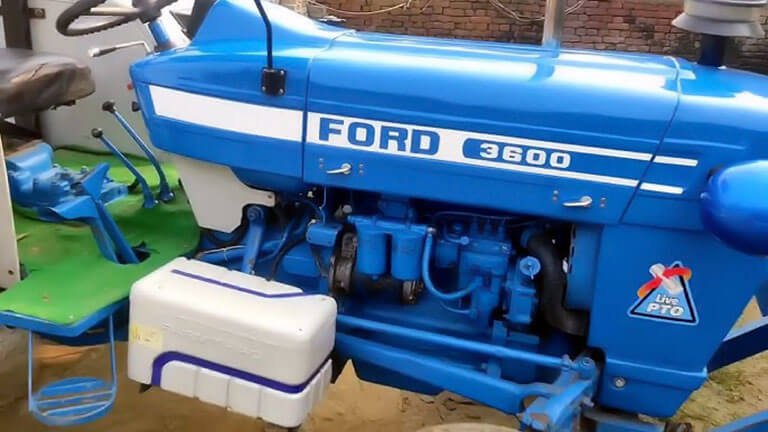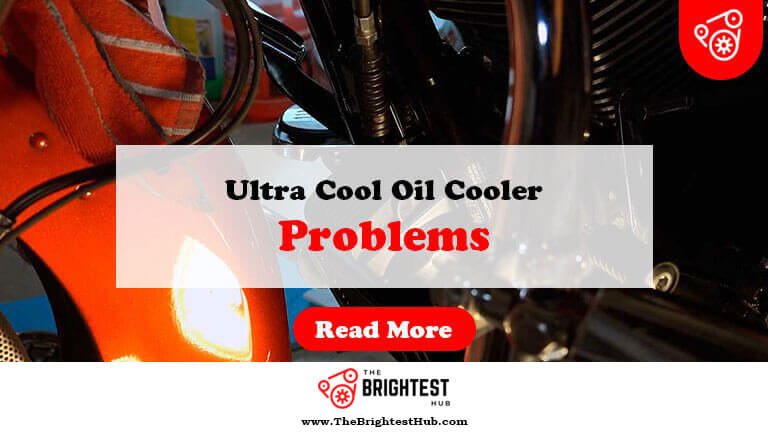Ford 3600 Tractor Problems: Common Issues & Fixes
Ford 3600 tractors commonly face issues with starting, hydraulic system failures, and electrical problems. Regular maintenance can help prevent these complications.
The Ford 3600 tractor is a reliable workhorse known for its efficiency in various farming tasks. Yet, like any machinery, it can encounter specific problems that hinder performance. Operators often report issues related to the engine, hydraulic systems, and electrical components.
Understanding these common challenges can help you maintain your tractor effectively. Regular checks and maintenance routines can extend the life of your equipment. Identifying problems early on can save time and money in repairs. This guide will delve into the most frequent issues faced by Ford 3600 tractors and offer practical solutions to keep your tractor running smoothly.
Introduction To Ford 3600 Tractor Issues

The Ford 3600 tractor is a popular choice among farmers. Its power and versatility make it a reliable workhorse. However, like any machinery, it has its share of problems. Understanding these issues can help owners maintain their tractors effectively.
Brief History
The Ford 3600 tractor was introduced in the late 1960s. It became part of the Ford 3000 series. Many farmers appreciated its durability and ease of use. Over the years, it gained a strong following.
Key features include:
- Strong engine performance
- Simple design for repairs
- Variety of attachments available
Despite its popularity, some problems have emerged over time.
Popularity And Its Downside
The Ford 3600 is well-loved, but this brings challenges. Many units are still in use. Older models may have parts that are hard to find. This can lead to longer repair times.
Common issues include:
- Hydraulic system leaks
- Electrical problems
- Engine overheating
Owners should be aware of potential downsides:
- High maintenance costs for older models
- Difficulty in sourcing replacement parts
- Competition with newer models
Understanding these issues helps owners keep their Ford 3600 running smoothly.
Starting Troubles
The Ford 3600 tractor is a reliable workhorse. Yet, many owners face starting troubles. Understanding these issues can help you get back to work quickly.
Symptoms Of Starting Issues
- Engine won’t crank – No sound when turning the key.
- Slow cranking – Engine turns over slowly.
- Intermittent starting – Starts sometimes, not others.
- Clicking noise – A clicking sound without starting.
Diagnosing The Problem
Identify the root cause of starting issues. Follow these steps:
- Check the battery. Ensure it is charged and connections are tight.
- Inspect the starter motor. Listen for any unusual sounds.
- Examine the ignition switch. Ensure it is functioning properly.
- Look at the fuel system. Check for fuel flow and quality.
Solutions And Maintenance Tips
| Problem | Solution |
|---|---|
| Dead battery | Charge or replace the battery. |
| Faulty starter motor | Repair or replace the starter motor. |
| Bad ignition switch | Replace the ignition switch. |
| Poor fuel quality | Use fresh fuel and clean the fuel system. |
Regular maintenance helps prevent starting troubles:
- Clean battery terminals.
- Check fluid levels regularly.
- Inspect wiring for wear and tear.
- Service the tractor annually.
Fuel System Complications
The fuel system in a Ford 3600 tractor is vital for performance. Problems can hinder efficiency and cause frustrating breakdowns. Understanding these issues helps maintain your tractor’s health.
Common Fuel System Issues
Many Ford 3600 tractors face fuel system challenges. Here are some common problems:
- Clogged fuel filters: Dirt and debris can block the flow.
- Water contamination: Water mixes with fuel, causing engine misfires.
- Leaking fuel lines: Cracks and wear lead to leaks.
- Air leaks: Air in the fuel system affects performance.
Cleaning And Maintenance
Regular cleaning and maintenance keep the fuel system running smoothly. Follow these steps:
- Inspect fuel lines for cracks.
- Check fuel filters for dirt and debris.
- Use a fuel cleaner to remove contaminants.
- Drain any water from the fuel tank.
Set a schedule for regular checks. This keeps your tractor in top shape.
Replacing Fuel Filters And Lines
Replacing fuel filters and lines is essential. Use the following tips:
| Task | Frequency | Notes |
|---|---|---|
| Replace fuel filters | Every 200 hours | Use OEM filters for best results. |
| Inspect fuel lines | Every 100 hours | Replace if cracked or damaged. |
Follow these guidelines to prevent major issues. Regular maintenance ensures a longer life for your tractor.
Hydraulic Problems
The Ford 3600 tractor often faces hydraulic problems. These issues can affect performance and productivity. Understanding these problems is crucial for any owner.
Identifying Hydraulic Faults
Recognizing hydraulic faults early can save time and money. Here are some common signs:
- Slow or weak lifting: The loader or implement does not lift properly.
- Leaks: Fluid leaks around hoses or cylinders.
- Noisy operation: Unusual sounds while operating the hydraulic system.
- Overheating: The hydraulic fluid becomes too hot during use.
Check the hydraulic fluid level regularly. Low fluid can cause many issues.
Repair Or Replace?
Deciding whether to repair or replace hydraulic components is crucial. Consider the following:
| Factor | Repair | Replace |
|---|---|---|
| Cost | Generally cheaper | Higher initial cost |
| Time | Usually quicker | Can take longer |
| Longevity | May last a while | Typically more durable |
Always weigh the benefits against the costs. Seek professional advice if unsure.
Preventive Measures
Preventing hydraulic problems keeps your Ford 3600 running smoothly. Follow these tips:
- Check fluid levels regularly.
- Inspect hoses and connections for wear.
- Change hydraulic fluid as recommended.
- Clean filters to ensure proper flow.
- Monitor for leaks and address them immediately.
Regular maintenance can extend the life of your tractor’s hydraulic system.
Electrical Challenges
The Ford 3600 tractor faces various electrical challenges. These issues can disrupt its performance. Understanding these problems helps in efficient troubleshooting.
Battery And Alternator Issues
Battery and alternator issues are common in the Ford 3600 tractor. Here are some key points to consider:
- Dead Battery: A weak or dead battery can prevent starting.
- Faulty Alternator: An alternator that fails will not charge the battery.
- Corroded Connections: Corrosion can hinder electrical flow.
Check the battery voltage regularly. A healthy battery should read around 12.6 volts. For the alternator, ensure it generates between 13.5 to 14.5 volts.
Wiring Problems
Wiring problems can lead to various electrical issues. Common wiring problems include:
- Frayed or damaged wires.
- Loose connections.
- Short circuits.
Inspect wires for visible damage. Use a multimeter to test connections. Ensure all connections are tight and corrosion-free.
Troubleshooting Electrical Components
Effective troubleshooting can resolve many electrical issues. Follow these steps:
- Check the battery and alternator.
- Inspect all wiring for damage.
- Test switches and fuses.
Use a wiring diagram for reference. This helps in identifying faulty components. Keep a multimeter handy for accurate readings.
| Component | Common Issue | Solution |
|---|---|---|
| Battery | Not holding charge | Replace battery |
| Alternator | Not charging battery | Test and replace if faulty |
| Wiring | Frayed wires | Repair or replace wires |
Pto And Clutch Issues
The Ford 3600 Tractor is a reliable workhorse. Yet, it can face PTO and clutch issues. Understanding these problems helps prevent downtime. This section covers symptoms, adjustments, and repairs.
Symptoms Of Pto And Clutch Failures
Recognizing the signs of PTO and clutch failures is crucial. Here are common symptoms:
- Slipping Clutch: Engine revs but the tractor doesn’t move.
- PTO Not Engaging: Implements fail to operate.
- Unusual Noises: Grinding or rattling sounds during operation.
- Vibration: Excessive shaking while using PTO.
- Difficulty Shifting: Hard to change gears smoothly.
Adjustment And Repair
Proper adjustment and repair can fix many issues. Follow these steps:
- Inspect the clutch linkage for wear.
- Check the clutch adjustment. It should have a slight free play.
- Look for leaks in the hydraulic system.
- Replace worn-out parts as needed.
For major repairs, consult a professional mechanic. They can help with:
| Repair Type | Description |
|---|---|
| Clutch Replacement | Swap out old clutch for a new one. |
| PTO Repair | Fix or replace PTO shaft and components. |
Ensuring Longevity
To extend the life of the PTO and clutch:
- Perform regular maintenance checks.
- Use high-quality lubricants.
- Avoid overloading the tractor.
- Store the tractor properly during off-seasons.
Implement these practices to keep your Ford 3600 running smoothly. Regular care prevents many issues.
Cooling System Faults
The cooling system in a Ford 3600 tractor is vital. It prevents the engine from overheating. Problems here can lead to serious issues. Regular maintenance can help avoid these faults.
Overheating Causes
Overheating occurs due to several factors:
- Low coolant levels
- Clogged radiator
- Faulty thermostat
- Broken water pump
- Leaking hoses
Each of these can cause the engine to run too hot. Regular checks can help catch these issues early.
Radiator Maintenance
The radiator plays a crucial role in cooling. Proper care ensures it functions well. Follow these tips for effective radiator maintenance:
- Inspect for leaks regularly.
- Clean debris from the exterior.
- Check coolant levels frequently.
- Flush the radiator annually.
These steps can prolong the life of your radiator.
Coolant Tips
Using the right coolant is essential. Here are some tips:
- Use a mixture of 50% coolant and 50% water.
- Check the coolant color; it should be bright.
- Replace old coolant every 2 years.
- Always use coolant recommended by Ford.
Following these tips helps maintain engine health.
Transmission And Gearbox Glitches
The Ford 3600 tractor is a reliable machine. Yet, it can face some issues with its transmission and gearbox. Understanding these problems helps you maintain your tractor better. Let’s explore common transmission problems, gearbox troubleshooting, and the importance of regular maintenance.
Common Transmission Problems
Many Ford 3600 owners report similar transmission issues. Here are a few common problems:
- Slipping Gears: This occurs when the tractor suddenly changes gears.
- Unresponsive Shifting: Difficulty in shifting gears can frustrate operators.
- Fluid Leaks: Transmission fluid leaks can lead to major damage.
- Noise: Unusual sounds may indicate internal issues.
Gearbox Troubleshooting
Diagnosing gearbox issues can save time and money. Follow these steps for effective troubleshooting:
- Check fluid levels. Low levels can cause shifting problems.
- Inspect for leaks. Look under the tractor for fluid stains.
- Listen for unusual noises. Grinding sounds can signal damage.
- Test the clutch. A faulty clutch can affect gear shifting.
Using a simple table can help you track common issues:
| Issue | Symptoms | Possible Cause |
|---|---|---|
| Slipping Gears | Sudden changes in speed | Worn gears or low fluid |
| Unresponsive Shifting | Difficulty in changing gears | Faulty linkage or low fluid |
| Fluid Leaks | Puddles under the tractor | Worn seals or gaskets |
| Noise | Grinding or clunking sounds | Internal damage |
Regular Maintenance For Smooth Operation
Routine maintenance keeps your Ford 3600 running smoothly. Here are essential maintenance tips:
- Check transmission fluid regularly.
- Change the fluid as needed.
- Inspect the gearbox for wear.
- Keep the tractor clean to avoid debris buildup.
By focusing on these tasks, you can prevent many problems. A well-maintained tractor means better performance and fewer repairs.
Preventive Measures And Regular Maintenance
Keeping your Ford 3600 tractor in top shape is essential. Regular maintenance helps prevent problems. Simple measures can save time and money. Follow these tips to extend your tractor’s lifespan.
Routine Checkup Schedule
Create a routine checkup schedule for your Ford 3600. Regular inspections help catch issues early. Here’s a suggested schedule:
| Checkup Task | Frequency |
|---|---|
| Oil change | Every 100 hours |
| Air filter cleaning | Every 50 hours |
| Tire pressure check | Weekly |
| Hydraulic fluid level | Every 10 hours |
Diy Maintenance Tips
Performing basic maintenance yourself is easy. Here are some simple DIY tips:
- Check fluid levels: Inspect oil, coolant, and hydraulic fluid.
- Clean air filter: Remove dirt and debris regularly.
- Inspect belts and hoses: Look for wear and tear.
- Grease fittings: Lubricate regularly to prevent rust.
- Battery maintenance: Clean terminals and check charge.
When To Seek Professional Help
Some issues require expert attention. Watch for these signs:
- Strange noises from the engine.
- Persistent leaks under the tractor.
- Difficulty starting the engine.
- Unusual vibrations while operating.
- Warning lights on the dashboard.
Consult a professional mechanic for serious problems. Early intervention can prevent bigger repairs.
Frequently Asked Questions
What Are Common Ford 3600 Tractor Issues?
Common issues include hydraulic problems, electrical failures, and engine overheating.
How To Troubleshoot Ford 3600 Hydraulics?
Check fluid levels, inspect hoses, and test the pump for proper operation.
What Causes Ford 3600 Engine Overheating?
Overheating can result from low coolant, a faulty thermostat, or a clogged radiator.
How To Fix Electrical Problems In Ford 3600?
Inspect wiring connections, test the battery, and check fuses for continuity.
What Maintenance Prevents Ford 3600 Problems?
Regular oil changes, filter replacements, and routine inspections help prevent many issues.
Conclusion
Addressing Ford 3600 tractor problems can enhance its performance and longevity. Regular maintenance is key to preventing common issues. Understanding these challenges helps in making informed decisions. Whether you’re a seasoned farmer or a hobbyist, being proactive can save time and money.
Keep your tractor running smoothly for years to come.






